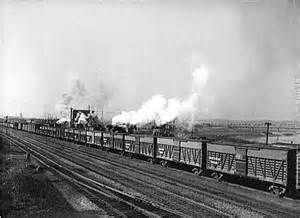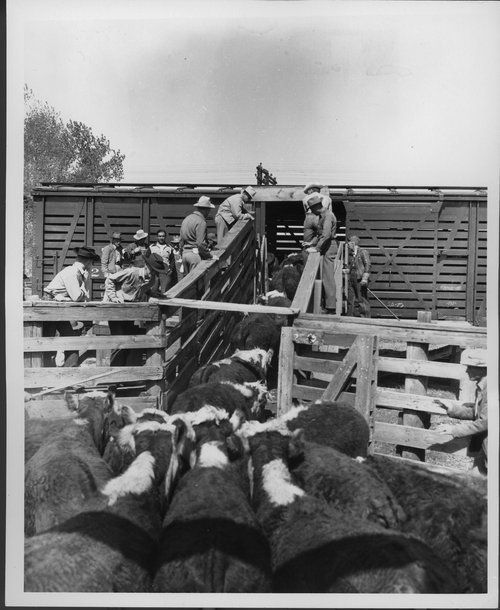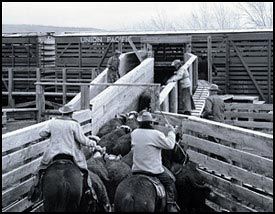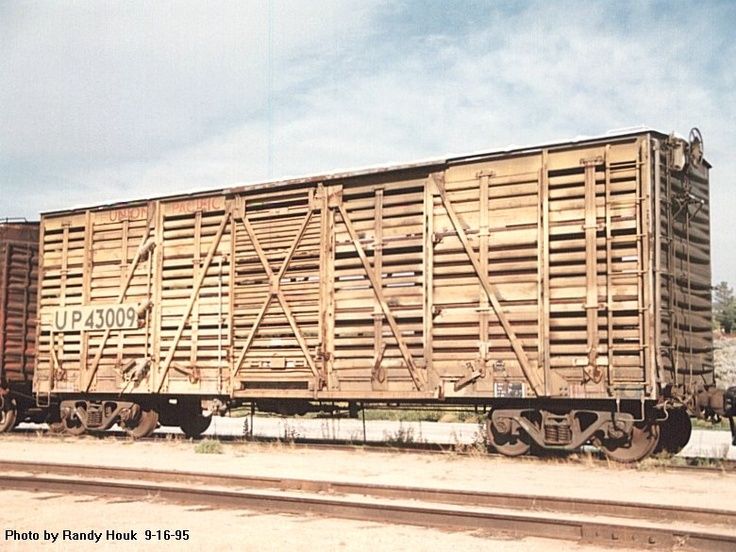The Cactus is in Bloom. A tale related in Tales of the Jointed Track
- Aug. 28, 2014, 8:32 a.m.
- |
- Public
My time in management, you work with other people, off other parts of the railroad. Tales and experiences are related. It’s all from a different perspective than your own, but it all relates to what you may have done.
Jim McHood Locomotive Engineer Seligman, AZ:
I worked with Jim, in San Bernardino, CA and Schaumberg, IL on the Santa Fe. We did crew management together. He was a Manager, as this strategic crew planning initiative was, being implemented. I was a planner for 2 years, learning the Northern and Southern California area, and bringing in the Denver to Pueblo region, along with the Pueblo Subdivision, and the Second, Third and Fourth Subs on the Colorado Division. This was the territory from La Junta, CO to Raton, NM. Raton to Las Vegas, NM, and Las Vegas, NM to Albuquerque,NM . He stayed with “Crew” and I transferred to locomotive utilization, or the power desk about 2 years afterward. Jim went to San Bernardino, CA as an Operations Superintendent, shortly after the merger in 1996 with the BN, instead of going to Ft Worth.
Jim was an engineer by craft, so we melded well. He was like me, in a sort of way, a free spirit, but the task at hand HAD to be done. He railroaded out of Seligman, AZ, as a fireman and and Engineer. He could run to Winslow,AZ or to Needles, CA. he also did the Grand Canyon branch and the Winslow to Ash Fork, AZ run. He was a tough old bird, but we had some good laughs.
Stock Trains:
Jim said they would bid these stock trains, because they were money makers. He said if he couldn’t hold one as the engineer, he could latch on as a fireman. They would grab the power and some stock cars and head to various stations to load up. Some trains were maybe 10 cars, and some were solid “blocks” of 50 to 60 cars heading for the markets.

you can see a block of stock cars in the old ATSF photo
For people that lived around the tracks, or are farmers and ranchers probably remember these. The stock pens were located near the tracks, usually off the siding, and accessed there as a separate track. That way other trains could be met or passed, while the cars were being loaded up.

Loading up of a Stock car, at Page, AZ on the Santa Fe. You can see one of the brakeman just to the right of the door and the loading ramp

another photo off the Union Pacific
They would spot the cars, and / or pick up livestock at was previously loaded upon their arrival. The train would be then taken to a crew terminal, say Seligman, Williams Jct or Winslow. The larger 50-60 car trains, were called and the locomotive consist relayed. A road crew would take to destination. The smaller portions were immediately switched and placed on a train for rapid departure. There also was a FEED-WATER-REST Rule, that the railroads complied with. Although livestock could be confined for a minimum of 22 hrs, then off loaded for 12 hours and reloaded again. I think there were 14 to 16 stalls, inside the car, so they weren’t crammed in there. Hogs had a different, layout, so they wouldn’t pile on and smother each other. Sheep were hauled as well.

A more “modern” UP stock car, a double decked carrier, with roller bearing trucks, and ABD-v1 air brake equipment
We have a Stock pen and holding yard at Greenland, CO on the former Rio Grande trackage, just off the northbound mainline. It is owned by the county as a historical site and not used.
Jim said, at one time, working with the Cowboys was tough at times and nerves reached to a high state of tension. The end of the work day the Cowboys headed for the ranch house and the engine crew ran to the next town and tied up for the night. “We’d meet in town the Cowboys and us, after a meal. In a saloon somewhere, something got said and the fights broke out”. Jim said they beat the living hell out of each other, cowhand and rail alike. “But we all were back the next day, loading up cattle and getting the job done”.
That was a tough bunch, but the old west. I hired out on the tail end of this.
This is a Laurie Lewis song The Cactus is in Bloom. This was originally written and sung by Jimmie Rogers the Singing Brakeman in the 1930’s. Laurie is 63 at this writing. about 6 months older than the dumb ol rail.
Last updated August 28, 2014



woman in the moon ⋅ August 29, 2014
Pretty woman. Talented too.
You wrote lots here.
The caboose in Copeland Park in LaCrosse is a stockman's caboose with accommodation for the caretakers of the livestock that was being hauled. There is a piece of paper tacked to the wall with the rules for water, feed, rest, etc. for cattle. In the late '30s my dad went to Chicago with cattle - once went to the Worlds Fair - a big event in his life. They weren't his cattle but he had permission to go with them. I think he got to the Trianon or Avalon ballroom too - they were venues for big bands in his day.
http://en.wikipedia.org/wiki/Trianon_Ballrooms
woman in the moon ⋅ August 29, 2014
Quite a picture of the Herefords boarding. They're my favorite kind of cattle.
MageB ⋅ August 29, 2014
What a story.
Larry ⋅ March 06, 2015
Back years ago when I first hired out at the yard office the old Soo Line Chief Clerk was telling me the story about the day when they got a couple car loads of horses come in off an eastbound train in order for the feed pens to get them off the train and out of the stock cars. Anyway it was many months later the company got a large claim for loss of livestock from somewhere over in France. After investigating it all it was determined that the laborer at the stock pens at Shoreham Yards (Mpls.,Mn.) had changed shifts and the new worker had loaded these horses into the wrong cars. The other load of horses was consigned to some outfit that made pet foods out of them. Anyways the expensive high bred horses went to the wrong place and the consignee in France got a bunch of old hags that should have been rendered at the pet food factory. Anyway the high bred horses more than likely got saved somehow by the workers at the factory.
I recently seen a photo of a Wranglers Caboose. And after researching just what it was for 30 mins. learned just what it was. It had like a large tool box on the roof of the caboose for all the Cowboys equipment that escorted the livestock across the railroads. Also they were longer than some of the other cabooses. Other than that they just looked like a regular caboose.
And about Jim McHood I always enjoyed working with him over the years. He was good to work with and great about doing what he could to make things work when we had problems. I got to meet many of the train crews over at Seligman back when I worked train order clerk there. The Havasupai was all like hotel rooms on the 2nd and 3rd floors and many of the crews would stay there for their layover rest time. I rented a room there plus got the adjoining room also and remember the ole Agent coming to me every payday to collect the rent which came to 10 cents per day. At least he never once charged me for the extra room. That was back in the early 1980's. Part of the duties of the train order clerk was to sound the fire siren in order to call up all the towns volunteer firemen for any fires that were reported. Sadly this small town of Seligman could never seem to raise enough funds to save the Havasupai Depot so it is no longer there today. I think the local residents also came to the depot there to pay their water bills as the well and water tank at the Depot also served the whole town.
Brakeshoe Bob Larry ⋅ March 06, 2015
I have a story similar to that, but it involved furniture. My late mother was a beautician by trade, and had a very successful business. There was a woman, who she and her husband owned the Cascade Furniture Warehouse. It was upscale, by appointment only, type of place. They had, and were waiting for a shipment of two boxcars, with furniture already sold on arrival. What they got were 2 empty lumber boxes. In a panic they called the BN, and the dilemma was related. Shortly afterward, in Spokane, WA, the Boise Cascade lumber company called the agent. Said we were to get two boxes and 3 bulkheads for lumber loading. The boxcars are loaded up with furniture. Well numbers were traced and the billing was wrong for both. I was working as an engineer with the Santa Fe out of Denver at that time. I told my mom, to tell them to make sure they have the station billing and CAR Numbers. They did get their furniture 5 days late. I think the BN cut them a deal on the freight charges as well. Thanks for reading.
Larry ⋅ March 06, 2015